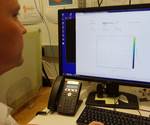"Future of AM" Roundtable Marks National Manufacturing Day
Additive manufacturing (AM) experts from Ford, Desktop Metal and MIT discuss future trends in a conversation moderated by Terry Wohlers.
What will the future of additive manufacturing (AM) look like? How will it differ from the current landscape?
A roundtable discussion recently hosted by Desktop Metal addresses these questions. Organized in part to celebrate National Manufacturing Day, the discussion was moderated by Terry Wohlers and included Ric Fulop, CEO, Desktop Metal; Ken Washington, CTO, Ford; and Prof. John Hart, MIT professor for additive manufacturing.
Here are a few trends these panelists see on AM’s horizon:
- Artificial intelligence (AI) and data-driven design for additive manufacturing (DFAM) will lead to the advent of better products.
- Expanding material options and improving properties will open a greater variety of applications, as 3D printing technology simultaneously advances.
- More production applications for 3D printing, including mass customization, will arise as a result of faster printers and lower cost 3D printing.
- Workforce development will include formal education and training as well as hobbyist 3D printing, which will help bring AM into the mainstream and expand the pool of future talent.
Watch the full discussion in the video below.
Related Content
-
3D Printed Cutting Tool for Large Transmission Part: The Cool Parts Show Bonus
A boring tool that was once 30 kg challenged the performance of the machining center using it. The replacement tool is 11.5 kg, and more efficient as well, thanks to generative design.
-
What Holds AM Back in Automotive Production? GM Additive Lead Describes Advances Needed
“If AM were cheaper, we would be doing more of it,” says GM’s Paul Wolcott. Various important factors relate to cost. However, the driving factor affecting cost is speed.
-
IndyCar's 3D Printed Top Frame Increases Driver Safety
The IndyCar titanium top frame is a safety device standard to all the series' cars. The 3D printed titanium component holds the aeroscreen and protects drivers on the track.

.jpg;width=70;height=70;mode=crop)










